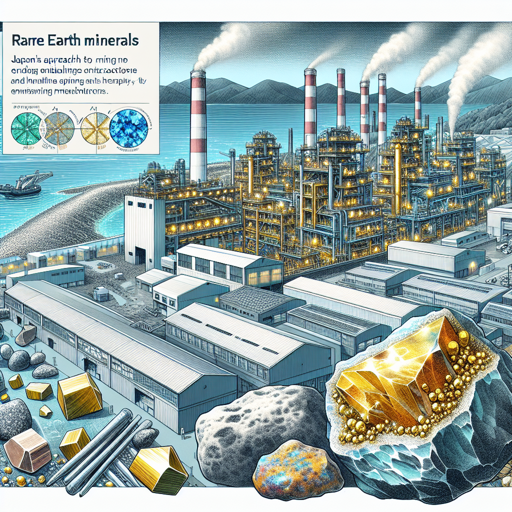Japan's Strategic Approach to Rare Earth Elements
A deep dive into Japan's strategic initiatives to secure rare earth elements for its thriving tech industry.

Introduction
Japan, known for its cutting-edge technology and manufacturing prowess, has always been reliant on imported minerals, especially rare earth elements (REEs). These REEs play a crucial role in the production of high-tech devices, renewable energy systems, and national defense equipment. This article explores the comprehensive steps that Japan has taken to secure its supply of these vital resources.
Japan’s Dependency on REEs
Japan’s technology industry, a significant contributor to its economy, heavily relies on REEs. These elements, often overlooked in the regular discourse, are the backbone of many modern technologies. From smartphones and electric cars to wind turbines and military equipment, REEs are indispensable.
However, 90% of the global supply of REEs is controlled by China. This dependence poses a risk to Japanese industries, which was realized in 2010 when China briefly halted REEs exports to Japan over a territorial dispute.
Japan’s Strategic Initiatives
To mitigate this risk, Japan has launched several strategic initiatives:
Diversifying Import Sources
Japan is diversifying its import sources to decrease dependence on a single country. It has started importing REEs from Australia, Vietnam, and even the U.S. This strategy not only reduces risk but also promotes healthy competition among suppliers, potentially driving down prices.
Investing in Alternative Technologies
Japan is investing heavily in research to develop alternative technologies that require fewer or no REEs. For instance, Honda has developed a hybrid car motor that doesn’t use heavy rare earth elements.
Domestic Mining
Although Japan’s landmass is not known for rich REE deposits, recent discoveries of vast mud deposits rich in REEs in the Pacific Ocean seabed have given hope for domestic mining.
Recycling E-Waste
Japan is encouraging the recycling of electronic waste, which often contains small amounts of REEs. This initiative not only secures a small supply of REEs but also promotes a circular economy and environmental sustainability.
| Strategic Initiatives | Benefits |
|---|---|
| Diversifying Import Sources | Reduces dependence on a single country |
| Investing in Alternative Technologies | Reduces the need for REEs |
| Domestic Mining | May provide a steady supply of REEs |
| Recycling E-Waste | Promotes sustainability and secures small supply of REEs |
“Japan’s strategic initiatives towards securing REEs supply are not just about maintaining its tech industry; they are a matter of national security and economic survival.” - Anonymous Expert in Mining
External Reference
For more information on Japan’s approach to securing its REEs supply, check this article by the BBC.
Conclusion
Japan’s approach to securing its supply of rare earth elements is a multidimensional strategy that includes diversifying import sources, promoting domestic mining, investing in alternative technologies, and encouraging the recycling of electronic waste. This comprehensive approach not only ensures a steady supply of REEs for its tech industry but also contributes to a more sustainable and resilient economy.